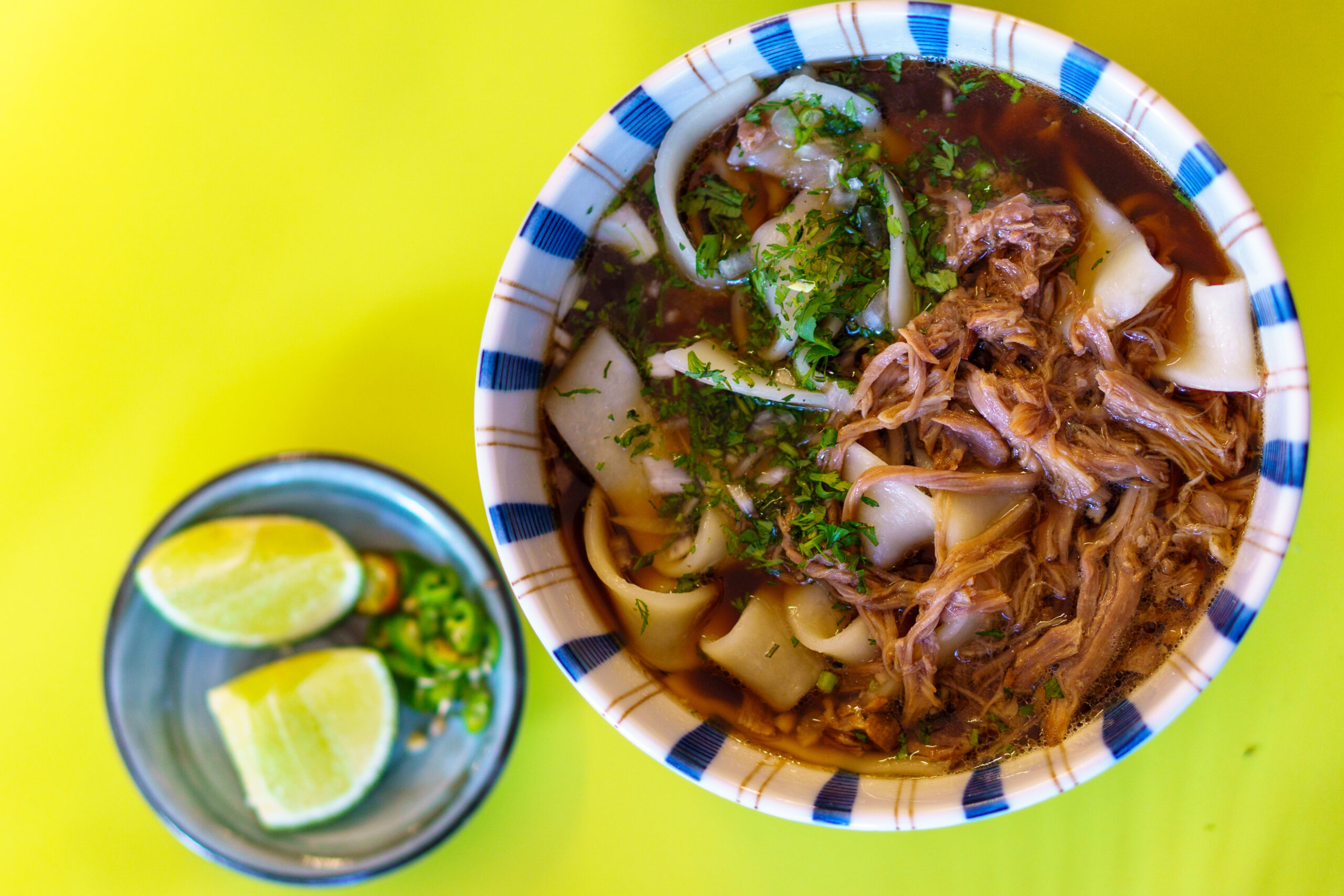Due to popular demand! Welcome to L.A. TACO's new travel column, 'Hungry For Mexico,' where we will bring you TACO-approved spots to eat and drink at while traveling to Mexico.
Some details are now hazy, but Mexico City chef Eduardo “Edo” Ramirez Nakatani can tell you when he first fell in love with food—it was on a family visit to Los Angeles. He was eight or nine years old, in 1978 or 1979, and it happened at a Thai restaurant, near West Covina, where his older sister had moved to start her career as a dentist. He tried larb for the first time, and when stuffing those lettuce wraps into his mouth, “I realized I really loved to eat.” He calls the moment his “revelation.”
As a teen in Mexico City, Nakatani’s early attempts at cooking often focused on trying to recreate that L.A. larb. Asian ingredients were hard to come by then, and he never quite nailed it. But in the process of trying, he became more conscious that what his family was doing in their home–combining Mexican and Asian ingredients and cooking techniques–was a necessity that led to invention.
Today, Edo Nakatani (who uses his mother’s maiden name professionally) is an established Mexico City chef, whose new restaurant, Fideo Gordo, is inspired by the way his family ate and lived. Fideo Gordo is an udon-ya, an udon noodle shop. But its five udon preparations reflect Nakatani’s family practice of using what was present to elevate whatever they were eating. The Obi Udon de Cordero, uses a consomé de barbacoa soup base with shredded deshebrada lamb, wide noodles, serrano chiles, and coriander. The vegetable udon combines a Mexican mushroom broth, soy milk, kombu, bok choy, miso, and Nakatani’s own salsa de chile morita. The more conventionally Japanese udon bowls—tempura, sesame, and clam—are accompanied by a dish of limes and sliced chiles, which was how the Nakatanis ate at home.
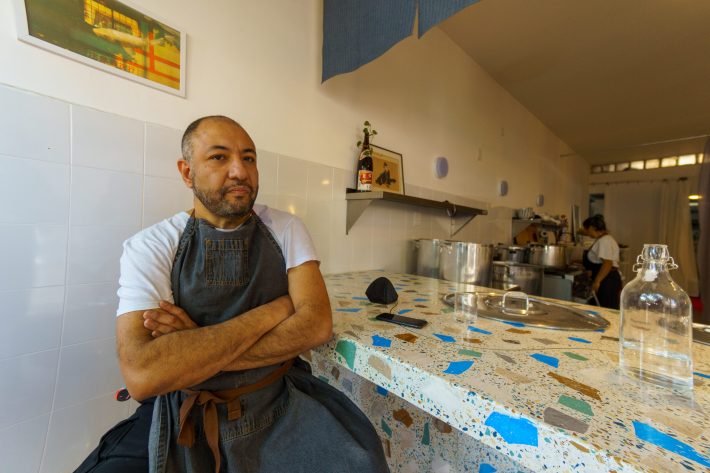
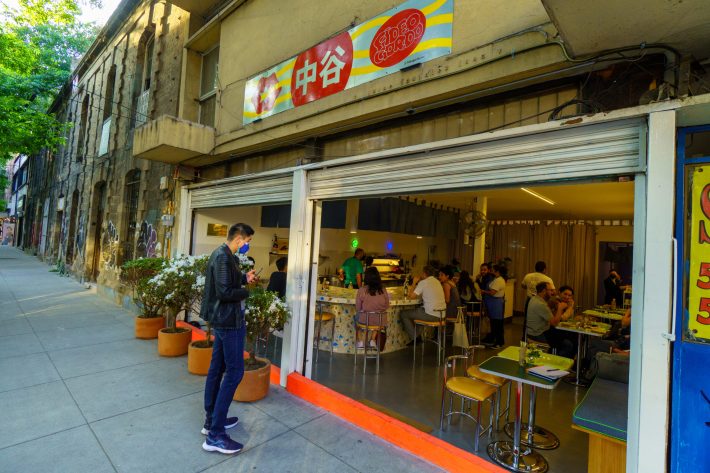
The restaurant, in the city’s foreigner-friendly enclave of Roma Norte, has been packed since opening in January. It’s too early to know if lamb udon will be the next big thing, but Nakatani’s family has a long history of shaping Mexican tastes.
Eduardo’s grandfather, Yoshigei Nakatani, created one of Mexico’s most popular snack foods, Cacahuates Japonéses (wafer-covered peanuts). Cacahuates Japonéses are sold in practically every convenience store and supermarket in Mexico. Also sold by street vendors, at sporting events, anywhere people want a snack to accompany a cold beer.
Yoshigei Nakatani began making them in 1943, selling them in and around the city’s sprawling Mercado La Merced. Yoshigei had arrived in Mexico in 1932 at the age of 22 to work in a factory that manufactured mother of pearl buttons.
When the factory closed during World War II, he took odd jobs in the Mercado La Merced, where he met Emma Ávila, a tall blonde güera whose parents had immigrated from Spain. The two married and began making múeganos, sugar-glazed fried dough snacks, and another version called “orandas” named for an aquarium fish popular in Japan (goldfish before goldfish). They were hot sellers, and Yoshigei decided to try recreating a Japanese snack of peanuts coated in a crispy rice flour and soy sauce shell. But without soy sauce or rice flour, Yoshigei Nakatani used wheat flour, caramel color, and piloncillo. It was his customers who first called them “Cacahuates Japonéses.” The Cacahuates Japonéses were also a hit, and by the 1970s, after Yoshigei’s children persuaded him to scale up and industrialize, Cacahuates Japonéses became the ever-present item they are today.
Yoshigei’s children also became cultural forces. His eldest son, painter Carlos Nakatani, was a key figure in the Generación de la Ruptura, the cadre of avant-garde artists who broke from Mexican muralism beginning in the 1950s. Perhaps even more well known was Yoshigei’s youngest son Gustavo, known by his stage name, “Yoshio,” a major Mexican pop singer in the 1970s and 1980s.
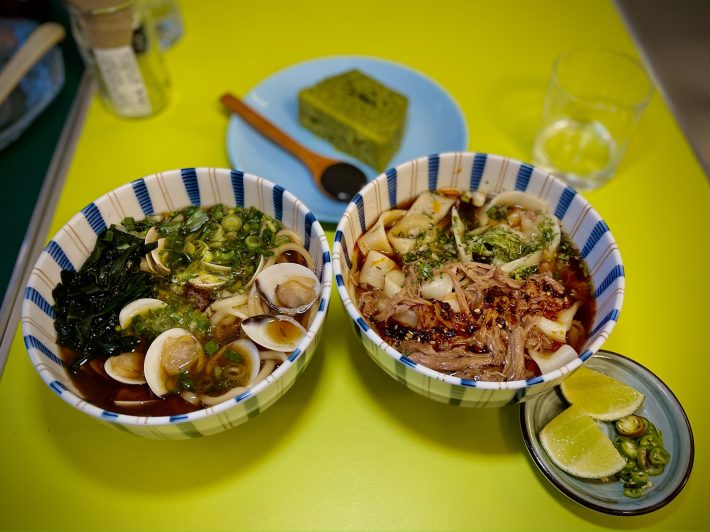
By the time Edo was growing up in the 1970s and 1980s, tío Yoshio’s songs were on the radio, tío Carlos was a major Mexican contemporary art figure, and Cacahuates Japonéses were everywhere.
Edo was a bit of a wayward soul. He thought perhaps he might be a post-punk guitar player and was a self-described horrible student. He worked in the family peanut factory through his twenties, then decided he would focus on cooking, his passion that began way back with that San Gabriel Valley larb tasting.
He enrolled in a Culinary Institute of America program in Mexico City and was hired by celebrated chef Mónica Patiño to help her start the Asian-influenced MP Cafe Bistro. There he created dishes like shrimp tacos with tomato sambal and house-made kewpie-style mayonnaise. The shrimp were marinated in sesame oil, chile, and lime, and the tacos were held together in an hoja santa leaf instead of a tortilla.
During this period, and after leaving the restaurant in 2016, Eduardo sought to deepen his understanding of Asian cuisine through multiple visits to Los Angeles. “It’s easy to go there [from Mexico City],'' he explained,” unlike Asia. After a three-hour flight, one could hit Little Tokyo, Chinatown, and Koreatown within a few hours. Along with multiple trips to L.A. and New York, Eduardo spent two months on an intensive culinary tour of Japan, Indonesia, Singapore, Cambodia, Thailand, and Taiwan.
More than what he saw in Asia, Edo was inspired by the work of chefs in Asian America: Lien Ta of Here’s Looking at You Babe in Los Angeles, and Danny Bowien and Angela Dimayuga of Mission Chinese Food in Brooklyn.
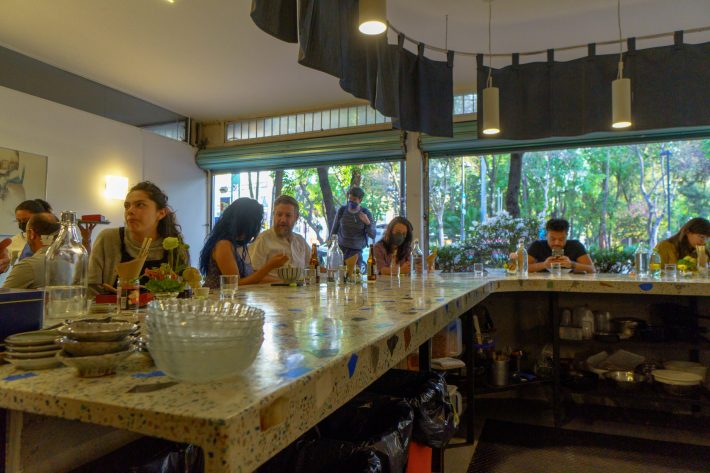
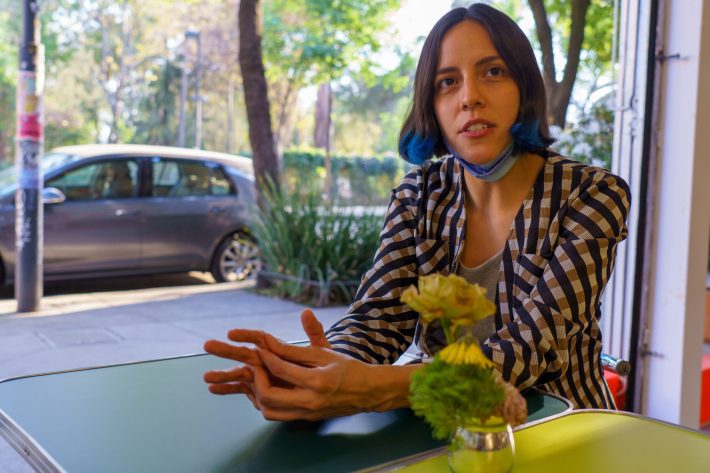
Last year, Edo decided that his own place would focus on udon noodles, which aren’t as well-known in Mexico City as ramen. He got a serendipitous boost when Yoshi Iwanami, a recent Japanese immigrant to Mexico City, followed him on Instagram. Iwanami had brought with him to Mexico the machinery for making noodles, to supply bespoke ramen and udon to restaurants. Edo now had a local source for udon artesanal.
Edo had in mind a literal hole-in-the-wall, serving udon through a window to sidewalk customers. But when he called in his niece, designer Carla Valdivia Nakatani, to work on the concept, they decided that not only would their food reflect their family’s history in Mexico, they would create a space embodying that highly personal identity.
Carla grew up in Manhattan but spent summers with the extended family in CDMX. She moved back to Mexico City nine years ago after finishing university in London, hoping to deepen her relationship with her family and Mexican identity.
Fideo Gordo’s style is inspired by memories of her great-grandparents Yoshigei and Emma’s home. The speckled terrazza bar, for instance, is reminiscent of the floor in that house; the way chopsticks are propped vertically in small glasses, cradled by paper napkins, is how Emma placed them on her table. The restaurant’s plates come from the Mercado La Merced, another tribute to Yoshigei and Emma.
The Fideo Gordo (“fat noodle”) name came out of a discussion with Edo during which he mentioned people in Mexico City usually don’t know what udon is; they call them “the fat noodles,” he explained. So, just as customers crowd-sourced the name “cacahuates japonéses” Edo and Carla decided to call the restaurant what la gente called udon.
Carla identifies as Mexican, not Mexican American. But having spent her formative years in New York, she said she used to cry during the “being Mexican American is tough” scene in the 1997 “Selena” movie (in which Selena’s dad declares “we gotta be twice as perfect as anybody else”). Fideo Gordo was a chance to defy such identity dysphoria. By simply depicting the reality of the Nakatani family history, it is neither Japanese nor Japanese-Mexican. It is just Mexican, sin límites.
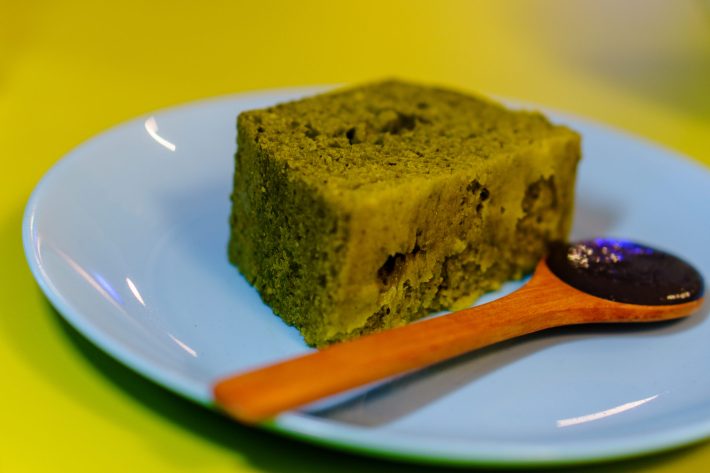

A painting in the restaurant, by Carlos Nakatani, Carla’s grandfather and Edo’s uncle, captures the family ethos. It shows Edo’s mother, Graciela Chiyoko Nakatani Avila, as a young child working with her parents, Yoshigei and Emma. They are making Orandas. Graciela is a little girl standing on boxes rolling out the dough, with her mother Emma sitting at a counter cutting the orandas and her father Yoshigei frying the pieces.
There are Japanese ink wash and water color influences, but the scene is entirely Mexican. When Carlos Nakatani used Japanese techniques, he did so to assert the Mexican objective of the Generación de la Ruptura artists, which was to transcend what they saw as dogmatism and narrow nationalism in the earlier Mexican muralism.
“There’s no need to put it in a box,” Carla says of the restaurant’s identity, “it’s just representative of who we are.”
Fideo Gordo is at Colima 5, Roma Nte., Cuauhtémoc, 06700 Ciudad de México, CDMX, Mexico
